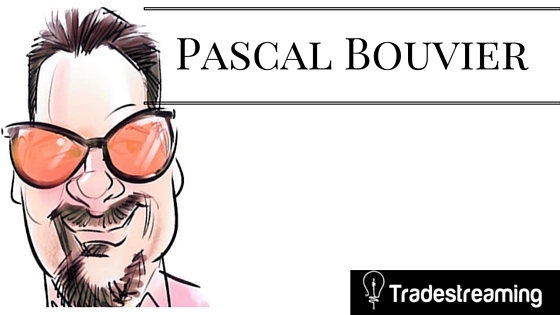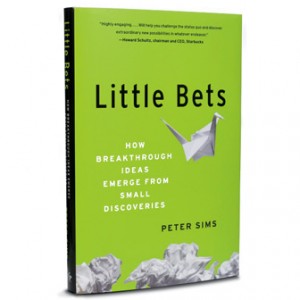Pascal Bouvier is an experienced fintech investor and joins Tradestreaming today to talk about his investments in the fintech space, how the market has changed over the past few years, and where this investor thinks the opportunities lie ahead. Follow Pascal on Twitter, LinkedIn, and his blog.
Who are you and what do you do?

I am a fintech investor who brings both operational and investment experience to the table. I have worked with large financial institutions as well as with startups and post-revenue small-sized businesses. I have also worked with technology and non-technology businesses. This uniquely positions me as an investor in early stage companies in the financial services industry. Further, I do have a global background having worked on several continents, a requirement given the financial services industry is a truly global industry.
What’s your view of fintech and finserv and how has it changed?
I have developed an expansive model where finserv equals fintech, like it or not. By that, I mean all finserv participants will have to behave like technology companies going forward. This means they will have to stop creating products and pushing them in unilateral ways to consumers and users and they will have to start to focus on technology, data and in a broad sense, customer experience.
All participants will have to do so, whether they are startups or incumbents, large or small or service providers. This will have, and is already having, a profound impact on how the industry is organizing itself. Namely, the customer and his needs – be it an individual or a corporation – will need to be front and center as opposed to wha the financial institution thinks the customer needs. This is both a subtle and profound departure from past and current paradigms.
In many ways the industry will have to reorganize itself around customers’ lifetime events via contextually relevant services and move away from a product-centric approach. That is the greatest insight one can have as a fintech investor.
You have a very interesting work history, with experience on the operator side in software and other industries. How has this impacted your worldview of fintech as an investor?
I was a commercial banker which influenced my view on commercial credit. I worked as an operator with various early stage startups, as well as high growth post revenue SMBs, which helped me understand the reality of day to day tactical operations and long term strategic vision in a very material and tangible way.
I also have acted as an investor in the banking world and in the VC world. My fintech investment style has been heavily influenced by my learnings as an operator. Early stage investing is not purely informed by dry analysis and spreadsheets. It is informed by how one relates to individuals and teams and by how one understands how operational complexity grows as a startup grows and experiences traction. I believe this has made me a better investor.
Where’s your sweet spot for making an investment? What does your target investment look like?
Based on how I see the financial services industry evolving, I believe the most effective sweet spot at this point in time is to focus on seed, Series A, and Series B investments where the investment size ranges from $500k to up to $5m. I do like to go above $5m for exceptional investments. I like that flexibility.
From an operational point of view, this means I focus on startups that have a product or platform in use with customers, whether in beta or whether live, and whether pre revenue or post. I shy away from ideas or technology that has yet been productized. I focus on companies that are about to hit product/market fit or already have a strong sense of product/market fit and who are experiencing the first inklings of pipeline growth. Although my view is global in nature, I have lately focused on Europe and the US.
How do you compare consumer fintech opportunities with more B2B ones?
Speaking of the firm I recently left, the portfolio is evenly split between D2C and B2B. some of the D2C are really B2B2C plays. As for my natural inclination, it really depends on the sector I look at.
The industry is comprised of five sectors: lending, capital markets, insurance, asset management, and payments. Given a particular geography and time for each of these sectors, I would be more attracted to D2C models, whereas this may change to B2B models otherwise. For payments, I prefer B2B by far, as getting traction in D2C payments is extremely difficult. In banking and insurance, I would prefer digitizing distribution channels which may mean D2C or B2B2C. For asset management or capital markets I would favor B2B models.
It really depends. Consumer plays are so much more difficult to hit just right that there is a natural comfort zone around B2B models, in my opinion.
What do you think is the most exciting investable part of fintech right now?
I will give several answers. First, insurance because the industry has barely been touched as of yet by disruption, so the opportunity is immense. Second, anything that has to do with identity management as applied to any of the five sectors comprising the industry. Third, and this is a new trend I am focusing much more on these days, financial wellness, which can be equally applied to the Western world as to emerging markets. Financial wellness is going to be huge in my opinion, as it sits at the intersection of the expectations of customers and a better stewardship of money, in general (not that I expect us to be completely weened from excessive consumerism mind you, but still I do expect changing times ahead).
What’s the most overdone part of fintech? Where are expectations too high in fintech investing?
It is always difficult to answer this question. So much depends on geography and timing. I would tend to answer that retail/consumer payments in the US is overheated and extremely crowded. “Digital” banking also seems to fall in that category. Finally, one particular model past its prime is pure retail roboadvisory in the wealth management space.










